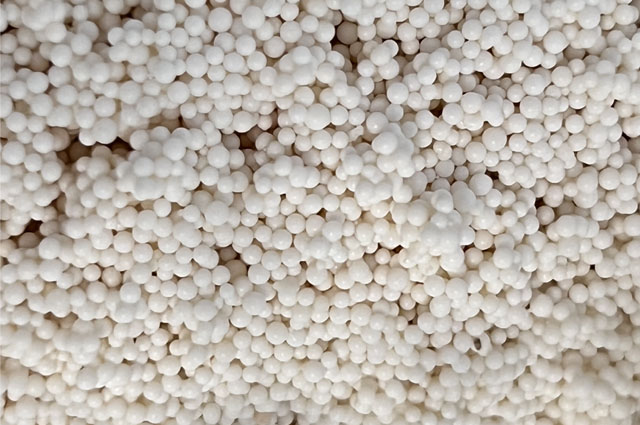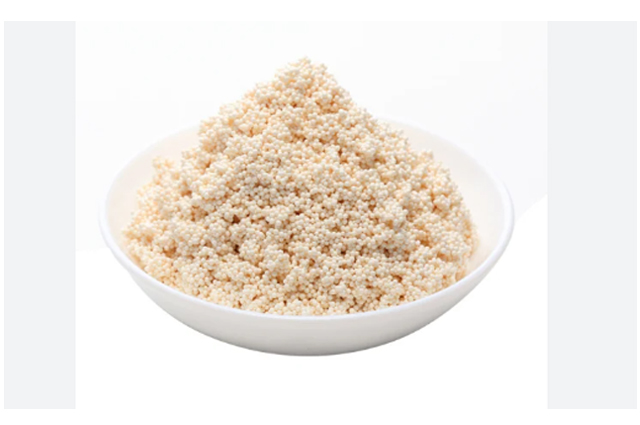Solvent Extraction vs Ion Exchange: Which is Better for Uranium Recovery?
1. Introduction
As the global energy sector undergoes a green transformation, nuclear power is once again at the center of discussions on sustainable energy development. Uranium, as the essential fuel for nuclear reactors, plays a critical role in ensuring energy security and reducing greenhouse gas emissions. With the revival of nuclear energy projects worldwide, efficient and reliable uranium recovery methods have become increasingly important for mining companies and nuclear industry suppliers.
Among the various extraction technologies available, two methods dominate the field: Solvent Extraction (SX) and Ion Exchange (IX). Both processes are widely used to recover uranium from leach solutions, but each has its own advantages, limitations, and suitable application scenarios. The key question faced by decision-makers is: Which technology offers better efficiency, cost-effectiveness, and sustainability?
2. Overview of Uranium Recovery Methods
2.1 Solvent Extraction (SX)
Solvent Extraction is a well-established hydrometallurgical technique. It relies on organic solvents containing extractants that selectively bind uranium ions from leach solutions, typically sulfuric acid-based solutions. The uranium is transferred into the organic phase and then stripped back into an aqueous phase for further concentration and precipitation.
This method has been extensively applied in large-scale uranium plants, especially where continuous, high-throughput operations are required. SX plants often feature complex mixer-settler units or pulsed columns to ensure effective phase contact. While the technology is mature, it requires significant capital investment and careful handling of organic solvents.
2.2 Ion Exchange (IX)
Ion Exchange relies on specially designed resins—often strong-base anion exchange resins or chelating resins—that selectively capture uranium ions from leach solutions. The loaded resins are later regenerated using appropriate eluents, releasing the uranium for downstream processing and allowing the resins to be reused.
IX technology has proven highly effective in both acidic and alkaline leach solutions. Its modularity makes it suitable for small to medium-sized mining operations, remote sites, or operations that prioritize environmental sustainability. The development of advanced resin formulations has further enhanced IX performance, improving uranium loading capacity, mechanical strength, and resistance to fouling.
3. Key Factors for Comparison
When comparing Solvent Extraction and Ion Exchange, decision-makers typically evaluate four critical aspects: efficiency, cost, safety & environmental impact, and scalability. These factors directly influence the feasibility and profitability of uranium projects.
3.1 Efficiency
Efficiency in uranium recovery is measured by uranium loading capacity, selectivity, and recovery rate.
Solvent Extraction Efficiency
SX is capable of processing large volumes of solution continuously, making it suitable for operations where throughput is the priority. However, SX often requires multiple stages of extraction and stripping to achieve high uranium purity. The selectivity of extractants can also be affected by the presence of competing ions such as iron, vanadium, or rare earth elements. This may result in additional purification steps downstream.
Ion Exchange Efficiency
IX resins are engineered to have high selectivity toward uranyl complexes. Modern resins can achieve high loading capacities and rapid kinetics, which significantly reduce processing times. Furthermore, IX systems are highly effective in dilute solutions where uranium concentrations are low, making them advantageous in scenarios where SX would be inefficient. The ability to regenerate and reuse resins also supports consistent recovery performance over long cycles.
Conclusion on Efficiency: While SX is effective in bulk processing, IX demonstrates superior selectivity and adaptability, particularly in low-concentration leach solutions. For mining operations dealing with variable ore grades, IX provides a more reliable recovery method.
3.2 Cost
Cost considerations include both capital expenditure (CAPEX) and operational expenditure (OPEX).
Solvent Extraction Costs
SX plants require substantial infrastructure, including mixer-settlers, settlers, and solvent recovery units. The use of organic solvents also leads to higher operational costs, as these chemicals are expensive and require continuous replacement due to degradation and losses. Energy consumption is another major factor, as the mixing and pumping of large volumes of liquid phases are energy-intensive.
Ion Exchange Costs
IX systems generally involve lower capital costs because resin columns are simpler to construct compared to full SX plants. Operationally, IX resins can be regenerated and reused for hundreds of cycles, which significantly reduces ongoing costs. The main expenses include the cost of the resin itself and the reagents used for regeneration, which are typically less costly compared to organic solvents. In addition, IX requires less energy, making it more economical in remote or off-grid mining sites.
Conclusion on Cost: Although the initial investment for SX may be justified in very large-scale projects, IX often delivers a better balance of cost-effectiveness for small to medium operations and where budget constraints are critical.
3.3 Safety & Environmental Impact
Sustainability and environmental protection are increasingly critical considerations in uranium mining.
Solvent Extraction Safety & Environmental Concerns
Organic solvents used in SX, such as kerosene-based extractants, pose risks of fire, toxicity, and environmental pollution. Leakage or improper disposal of solvents can lead to long-term ecological damage. Additionally, solvent evaporation contributes to volatile organic compound (VOC) emissions, raising workplace safety and regulatory concerns.
Ion Exchange Safety & Environmental Benefits
IX resins are generally solid, stable polymers that do not pose flammability risks. The regeneration process produces smaller volumes of eluate compared to the large solvent streams in SX, reducing waste treatment challenges. Moreover, IX operations align with global trends toward green mining practices, as they generate less hazardous waste and minimize environmental footprints.
Conclusion on Safety & Environment: IX clearly has the upper hand. For mining companies under strict environmental regulations or seeking ESG (Environmental, Social, and Governance) compliance, IX is the preferred choice.
3.4 Flexibility & Scalability
Operational flexibility and scalability are important when adapting to different mining environments.
Scalability of Solvent Extraction
SX is most suitable for large-scale, centralized plants with stable ore supplies. Scaling down SX processes to smaller operations is technically possible but rarely cost-effective due to the complexity of the equipment.
Flexibility of Ion Exchange
IX is highly modular and can be deployed in mobile skids or containerized systems, making it ideal for pilot plants, remote operations, or mines with fluctuating production. This adaptability gives IX a significant advantage in modern mining projects where flexibility is often a requirement.
Conclusion on Scalability: SX dominates in mega-projects, but IX offers unmatched flexibility and modularity, allowing mining companies to scale operations based on demand.
4. Advantages & Limitations
4.1 Solvent Extraction
Advantages:
Well-established and widely used
High throughput for large-scale operations
Effective in high-concentration leach solutions
Limitations:
High capital and operational costs
Environmental and safety concerns related to solvents
Limited adaptability for smaller operations
4.2 Ion Exchange Resins
Advantages:
High selectivity and recovery efficiency
Lower environmental impact
Cost-effective for small to medium-scale projects
Modular and flexible design possibilities
Limitations:
Resin lifespan is finite and requires replacement
Performance can be influenced by fouling or resin degradation
Requires careful selection of resin type for specific leach chemistries
5. Industry Trends and Future Outlook
The uranium industry is experiencing renewed growth due to the global push for carbon-free energy. With nuclear power poised for expansion, uranium recovery methods are under increasing scrutiny.
Sustainability Pressure: Stricter environmental regulations are encouraging companies to transition from solvent-intensive methods to greener alternatives like IX.
Technological Innovation: Advanced ion exchange resins, such as chelating and nanostructured resins, are enhancing uranium selectivity and durability.
Market Dynamics: As uranium demand rises, especially in Asia and the Middle East, IX systems will likely gain greater adoption due to their cost and environmental advantages.
6. Conclusion
Both Solvent Extraction (SX) and Ion Exchange (IX) have a proven place in uranium recovery. SX remains competitive for very large, centralized operations with stable ore supply, while IX is increasingly recognized for its efficiency, cost savings, and environmental advantages.
|
Factor |
Solvent Extraction (SX) |
Ion Exchange (IX) |
|
Efficiency |
High throughput, lower selectivity |
High selectivity, effective in dilute solutions |
|
Cost |
High CAPEX & OPEX |
Lower CAPEX & OPEX |
|
Safety/Environment |
Solvent risks, waste streams |
Safer, greener, less waste |
|
Scalability |
Suited for mega-projects |
Flexible, modular, ideal for small/medium sites |
For companies evaluating uranium recovery methods, the choice ultimately depends on project size, ore chemistry, and regulatory environment. However, with increasing emphasis on sustainability and cost control, Ion Exchange resins are steadily emerging as the preferred solution for the future of uranium recovery.
At COMCESS, we specialize in advanced ion exchange resins designed specifically for uranium recovery applications. Our resins offer:
High selectivity and capacity for uranium ions
Strong resistance to acidic and alkaline environments
Proven performance in field operations across mining and nuclear sectors
If you are looking to improve efficiency, reduce environmental impact, and secure long-term reliability in uranium recovery, our team is ready to support your project.
Contact us today to learn more about our uranium extraction resins and customized solutions.
-
 Uranium Extraction Ion Exchange ResinPhysical Form: Opaque beadsIonic form: SulfateTotal Exchange Capacity (Cl− form) mmol/ml: ≥1.30
Uranium Extraction Ion Exchange ResinPhysical Form: Opaque beadsIonic form: SulfateTotal Exchange Capacity (Cl− form) mmol/ml: ≥1.30 -
 Gold Extraction Resin Metal Removal and RecoveryAppearance: White to light yellow opaque beadsIonic form:CLVolum exchange rate (mmol/ml):0.30~0.70
Gold Extraction Resin Metal Removal and RecoveryAppearance: White to light yellow opaque beadsIonic form:CLVolum exchange rate (mmol/ml):0.30~0.70

